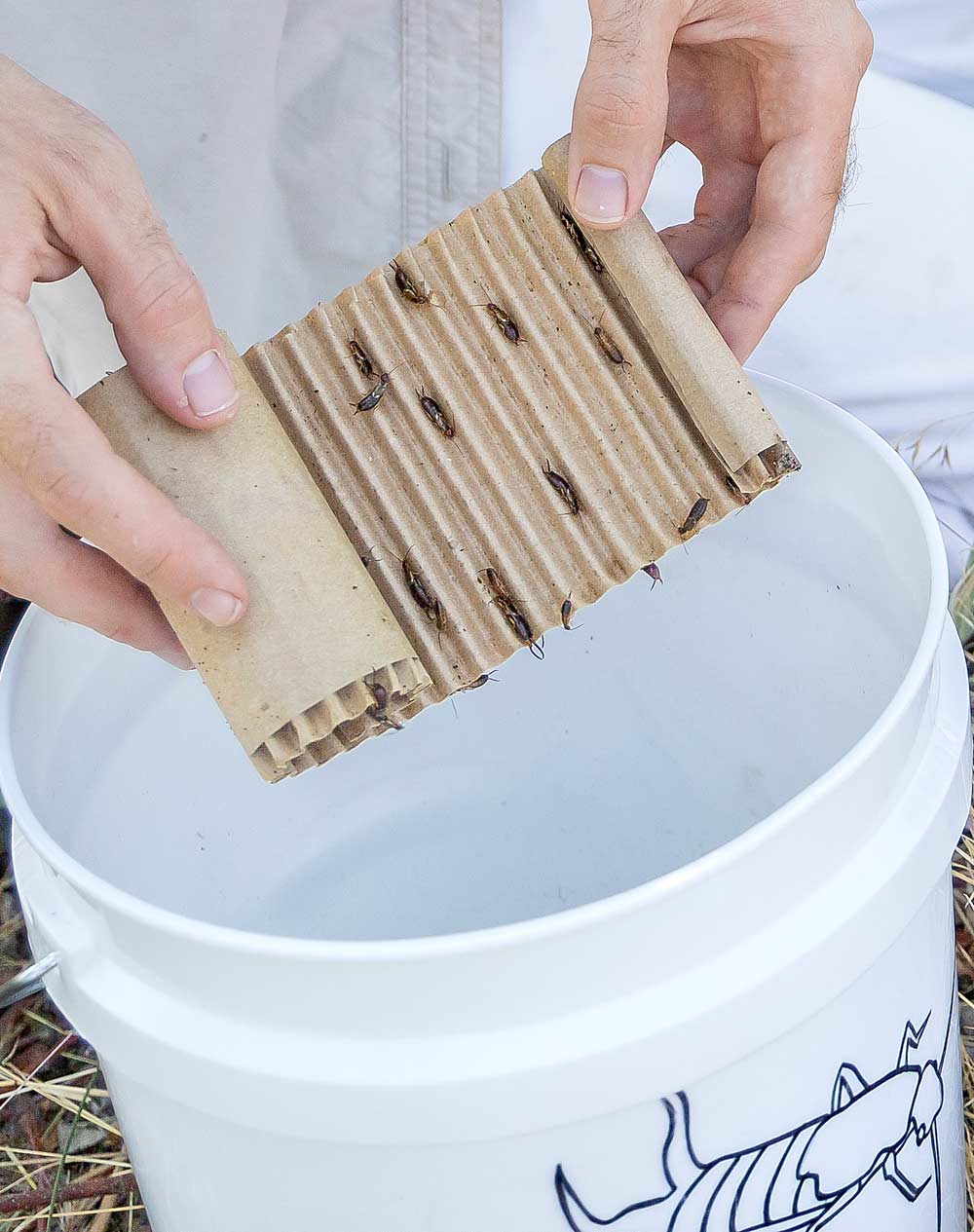—by Kate Prengaman
Who wants a bucket of earwigs?
Apple and pear growers might, especially those looking to boost natural-enemy populations for biological control of aphids and pear psylla in their orchards.
Washington State University researchers want to build on their findings that earwig releases can be beneficial and are hosting a series of workshops to show growers how easy it is to trap the insects in hot spots where they are not wanted — say, an organic peach orchard — and release them in pear and apple blocks.

“The way earwigs work as a biocontrol is as a generalist,” said Robert Orpet, WSU entomologist and earwig expert. They have one generation a year, emerging each spring, hungry and ready to eat pests as they arrive, unlike other predators, such as ladybugs, which are attracted to your orchard once an aphid population has built up.
“So, earwigs keep the aphid peak lower,” he said. “They are a complementary part of biocontrol.”
To trap the earwigs, Orpet recommends placing rolls of corrugated cardboard on the trunks of trees in blocks known to be hot spots. These can be placed weeks or months ahead of collection. Once a few earwigs find the rolls, they release an aggregation pheromone that attracts more.
Collection is as easy as emptying the cardboard rolls into buckets and delivering them to the destination orchard. WSU’s website offers resources for earwig-friendly spray programs.
“I think the greatest benefit is if you are early in transition to an IPM program,” and looking to boost native natural enemies, Orpet said. Earwigs don’t disperse, so you can do releases to build a local population.
Workshops will be held on Thursday, July 25 in the Wenatchee area and on Thursday, Aug. 1 in Hood River, Oregon. Attendees can take home a free bucket of earwigs! For more details and to register, head to: cahnrs.wsu.edu/tfrec-orpet/earwigs.







Leave A Comment